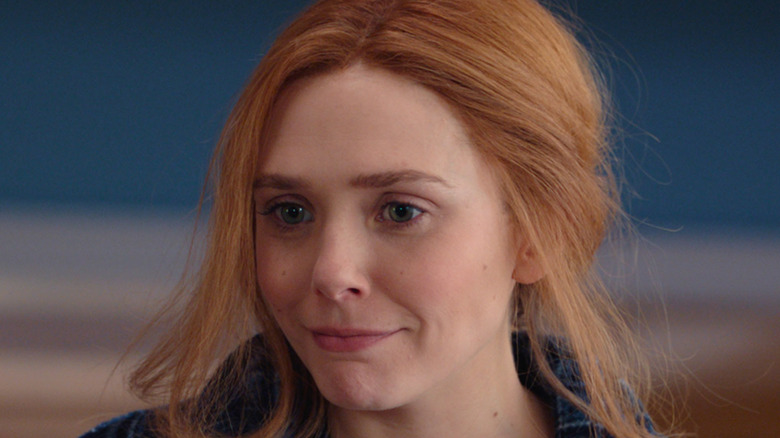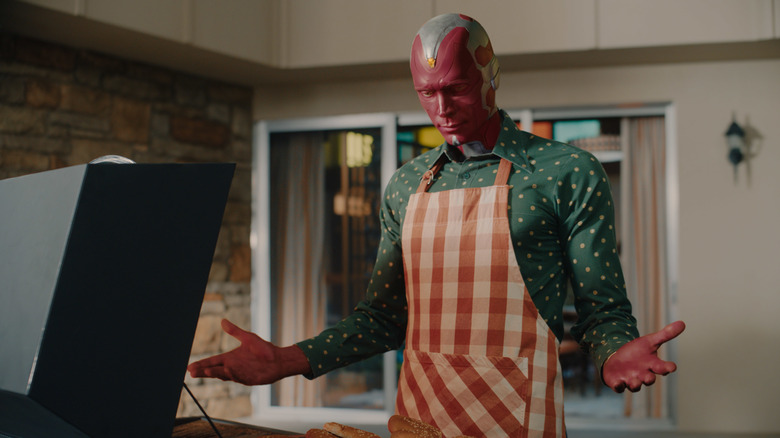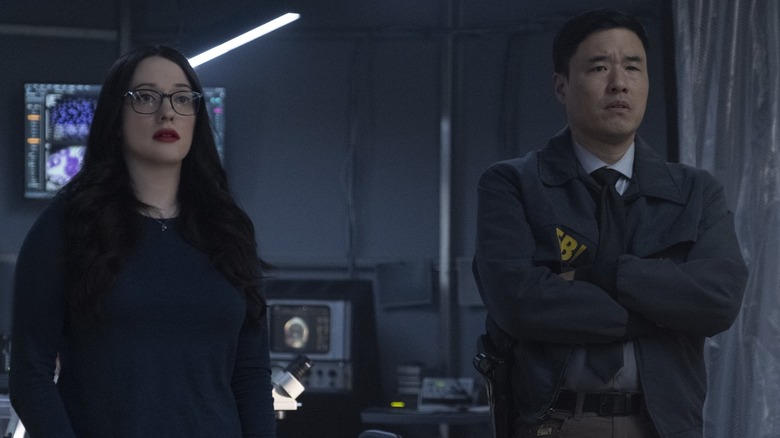We Finally Understand Why Wanda Broadcast The Events Of WandaVision
What do you do when you need to get away from the world for a little while?
Some people might find needed escape by going further out into nature, far from the people and distractions of modern life. Others retreat internally, finding solace in something familiar, something comforting: a distracting video game, a classic film, or a favorite sitcom. The impulse to seek familiarity and predictability perhaps explains why someone with incredible cosmic power might use that power to construct her own, relatively itty-bitty living space of a sitcom neighborhood.
There's a little bit more behind the structure and format of Disney and Marvel Studios' "WandaVision" than that, as showrunner Jac Schaeffer explained to Rolling Stone for its recent and revelatory oral history of the first-ever MCU TV series. According to Schaeffer, Wanda is broadcasting the events in Westview for two reasons, and one of them might come as a surprise to fans.
Westview is meant to be Wanda's vision of a perfect world
"One, she's curating her experience," Schaeffer told Rolling Stone. "She is creating the full picture of her idealized world. So she's editing and adding a score and adding commercials, and she's making the completed piece that is verification of her perfect life."
In other words, it's an effort to impose order on a world that has sent her reeling. Maintaining that illusion of perfection involves some work on Wanda's part, attempting to correct both her own mistakes and those caused by the machinations of Agatha Harkness (Kathryn Hahn). For instance, she doesn't want anyone to see her violent ejection from Westview of Geraldine aka Monica Rambeau (Teyonah Parris) in the third episode, and so the broadcast cuts out before that happens. Even as her world is shaken by Monica's talk of her brother's death, she's thinking of the final product and how it will look. The show must go on, and all that.
Apparently, the faux commercials interrupting the broadcast were originally meant to be tied to Doctor Strange's (Benedict Cumberbatch) final episode cameo, potentially as messages he was sending to Wanda. That all had to be reworked when the cameo fell through, however.
The real reason Wanda's constructed world takes the form of a TV broadcast
To Schaeffer, the sitcom trappings and the broadcast frame aren't solely for Wanda's benefit. Wanda's not just building a world she knows deep down is make-believe out of the themes and settings of other fictional universes. If it was meant just for her, she wouldn't need the audience at all. Her Westview could be a dollhouse, something self-contained that she has total control over that will let her live out her fantasies.
But that's not what she wants. She wants someone to see. "I think she's looking for a witness. It's a call for help. It's reaching out." Darcy Lewis (Kat Dennings), Jimmy Woo (Randall Park), and whoever else is out there watching, are doing her a favor in a sense.
"The broadcast ends and cuts out after the hex expansion at the end of Episode Seven," Schaeffer said. "And that's because she's done with the outside world." She may have been crying out for help, but she wasn't psychologically ready for what that help would entail. She perhaps wanted them to recognize and acknowledge her pain, not try to shut her down entirely. She needed more time to process her grief. She needed to stay removed from the world for a while longer.
The cry for help, and the need to be seen, may not be the most intuitive explanations for fans, but they certainly make sense within the rich thematic content of "WandaVision."


